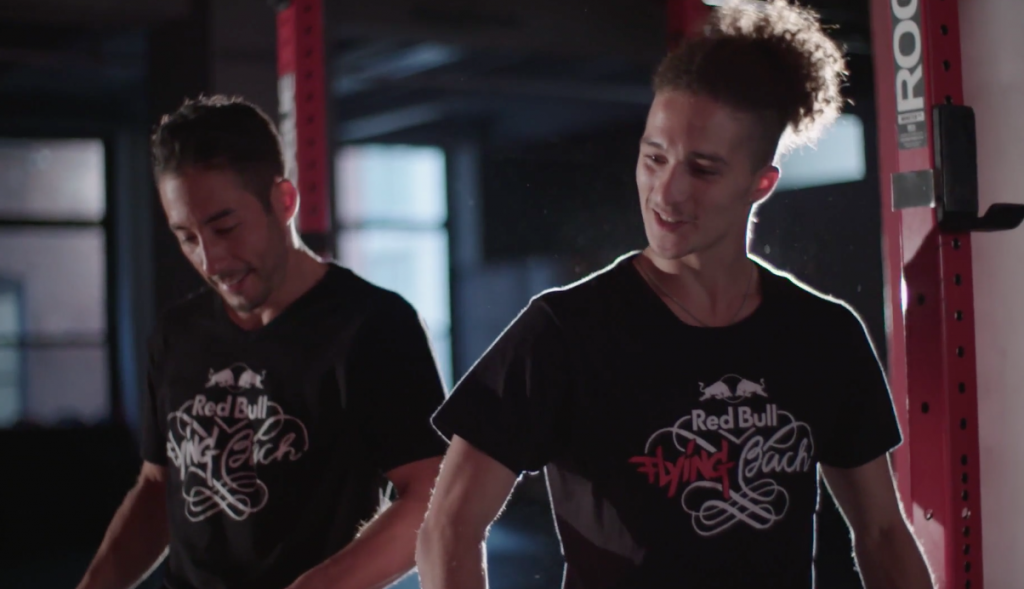Breakdance is not only a mesmerizing display of unique talent, skill, and rhythm—It’s also physical fitness in one of its most raw forms. While you may not find these dancers in the gym for hours on end or pumping heavy weights, they do take the conditioning of their bodies very seriously. For them, it’s just maintained differently. Their training is natural, organic, and as environmental as it gets. (Or, on the floor to be more accurate.)
“You use every muscle in your body,” says Benny Kimoto (@BennyKimoto), a member of The Flying Steps (@redbullflyingbach), and an athlete credited with being a true pioneer of the craft. He adds, “You have to be in shape because you can get injured really fast, so we try and take care of our bodies.” Uwe Donaubauer (@uwe_donaubauer), a teammate who is known as a master of mixing the different styles of breakdance, reaffirms that what they do is a total-body test of fitness. “It takes strength from everywhere,” he says.
While their performances are far from cookie-cutter, there are patterns, themes, sequences, or progressions you’d see during any one of their shows. “Top Rocks” is a series of steps while remaining in a somewhat upright position on their feet. From there, they may drop into “Foot Work” which is much quickier sequences while in a lower, or even squated/crouching positions. Next are the “Power Moves.” These are what really catch your (and the camera’s) attention as they’re explosive and free-spirited. Finally, you have “Freezes” which are exactly what they sound like, a freeze in the movement.
As you can imagine, the body is being cardiovascularly taxed and put through twists, turns, contortions, and inversions. The level of total-body strength and control is high, but it’s equally as dangerous. To mitigate that risk, the team’s practices closely replicate what they do in an actual performance, but slower, more controlled, and for repetitions to build and maintain strength.
1. Push up circles
This is a combination of push ups and foot work to warm up both the upper and lower body.
2. Freeze practice
While you may see a very specific “freeze” during a performance, in practice the team will put them through almost every variation possible to prepare every muscle, joint, ligament, and tendon.
3. Top rock circles
Think of this as your light cardio session before a traditional warmup. It’s light and easy to get the blood flowing.

